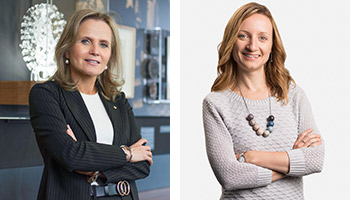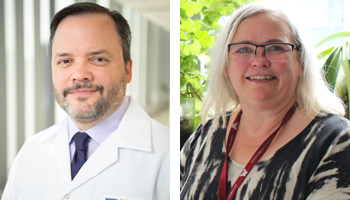amfAR Awards $1.5 Million to Researchers Targeting the HIV Reservoir
The HIV cure-focused strategies involve mRNA and gene-editing technologies, and souped-up natural killer cells
In early October 2022, amfAR announced a new round of grants Thursday, providing almost $1.5 million to researchers proposing innovative ways of overcoming the barriers to a cure for HIV.
The main barrier remains the persistent reservoir of HIV, which has so far resisted virtually every attempt to eliminate it. The only exception to this is the handful of cases of a cure via high-risk stem cell transplantation in people living with both HIV and certain blood cancers.
“The reservoir, in tissues especially, is what makes HIV so difficult to cure,” amfAR Chief Executive Officer Kevin Robert Frost said. “While the powerful drugs in use today are highly effective at keeping HIV in check, we cannot yet in a scalable way remove the virus entirely from a person’s body. It is our hope that these research projects will enable us to poke holes in HIV’s armor.”

Sharon Lewin, M. D., Ph.D., of the University of Melbourne, was awarded $480,000 for a study using the delivery system that worked so well for two very effective COVID-19 vaccines–messenger RNA (mRNA) encased in a lipid nanoparticle. This mRNA vehicle will transport a gene-editing tool to HIV-infected reservoir cells in order to reactivate them, making them a target for eradication. No intervention has so far proven powerful enough to force HIV-infected cells to start replicating in a way that makes them vulnerable to cell death. Dr. Lewin is using a form of the CRISPR-Cas gene-editing system modified to bind to the viral DNA and directly force the virus to start replicating.
The other three projects all aim to maximize the lethality of the immune system’s natural killer (NK) cells. Dr. Anna Hearps of the Burnet Institute in Melbourne, Australia, was awarded $106,088 to develop a means of killing HIV-infected macrophage cells. Macrophages are long-lived cells that are highly resistant to killing by the immune system even when infected. Dr. Hearps plans to discover which anti-HIV antibodies best recognize HIV-infected macrophages. She will also identify the most lethal subset of NK cells, which will be recruited by the antibodies to kill the macrophages and will form part of an immunotherapy to cure HIV.
Dr. Luis Montaner of the Wistar Institute was awarded $372,662 to build on recent advances in cancer research to generate genetically modified NK cells that are optimally designed to kill HIV-infected cells. He plans to engineer the NK cells to bind to antibodies that effectively seek out HIV-infected cells, and will modify the antibodies to become more effective at inducing death of infected cells.

Dr. Pamela Skinner of the University of Minnesota also plans to enlist engineered NK cells to target the HV reservoir. While cytotoxic T cells and NK cells are some of the most effective killers of the immune system, they are ineffective against the HIV reservoir in part because they do not easily access the regions of the lymph node where a major reservoir persists. With a $480,000 grant, Dr. Skinner plans to engineer CAR-T and CAR-NK cells to zero in on the lymph nodes to enhance their chances of success. She will also modify them to overcome the exhaustion to which immune cells are prone and to resist becoming HIV-infected cells themselves.
Share This:
